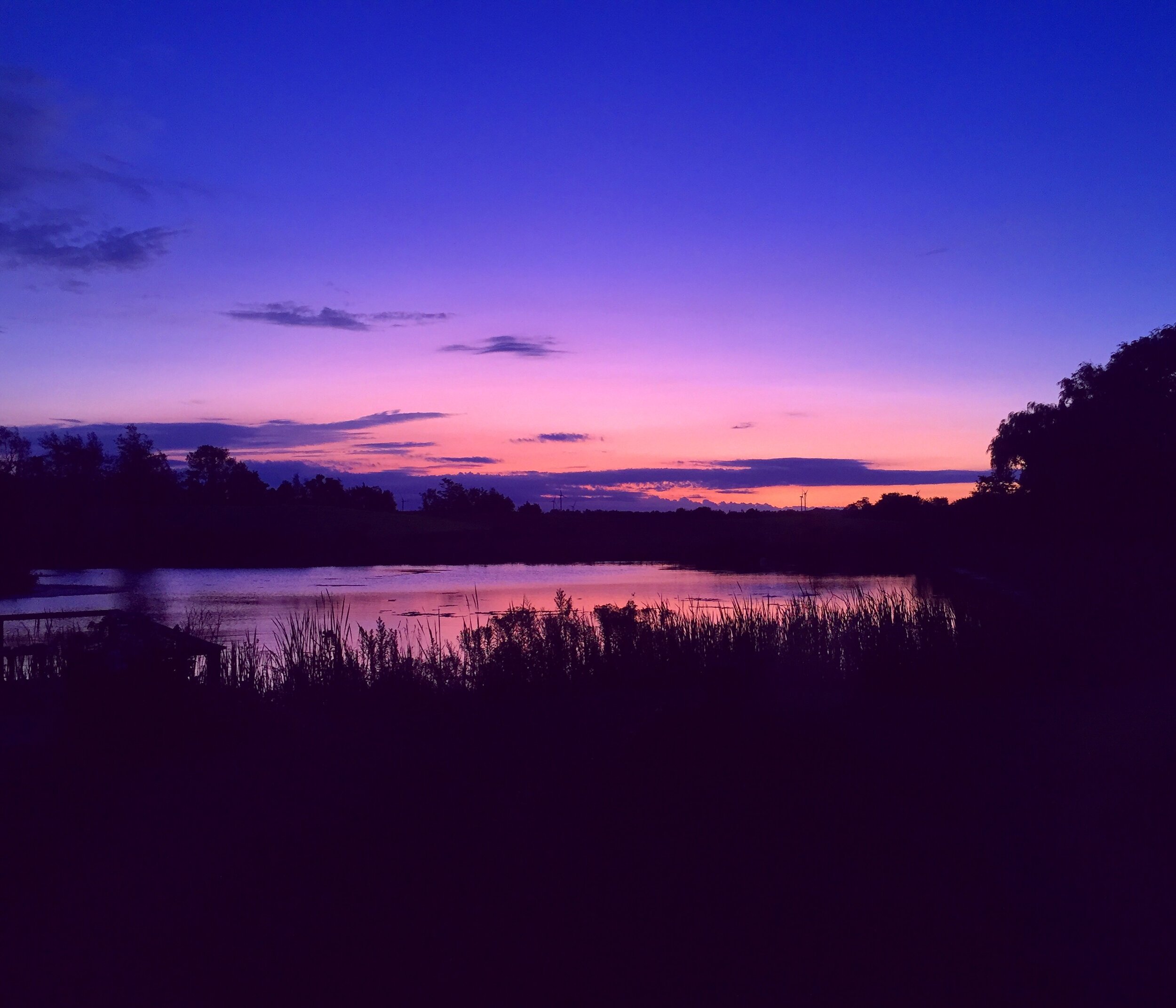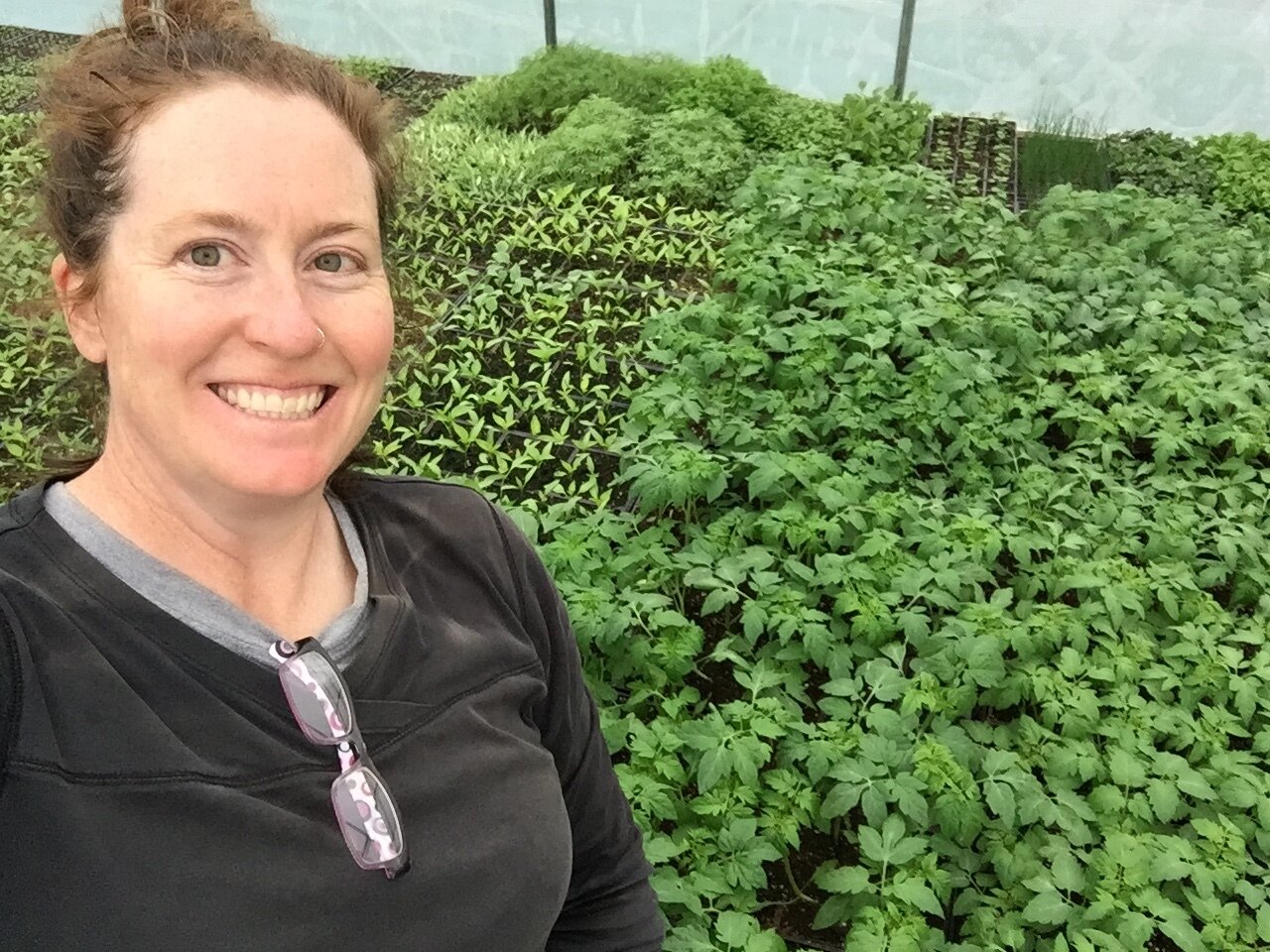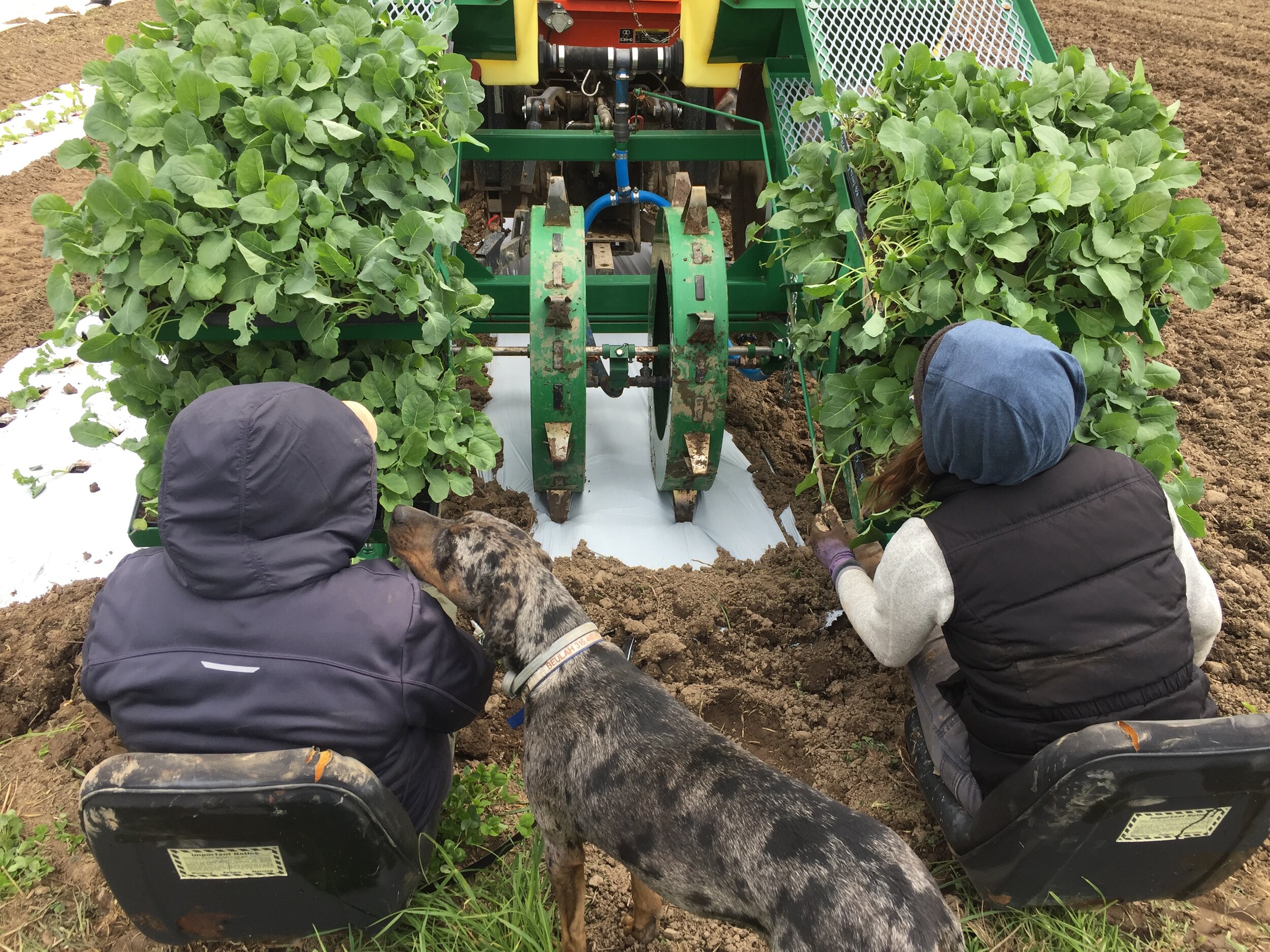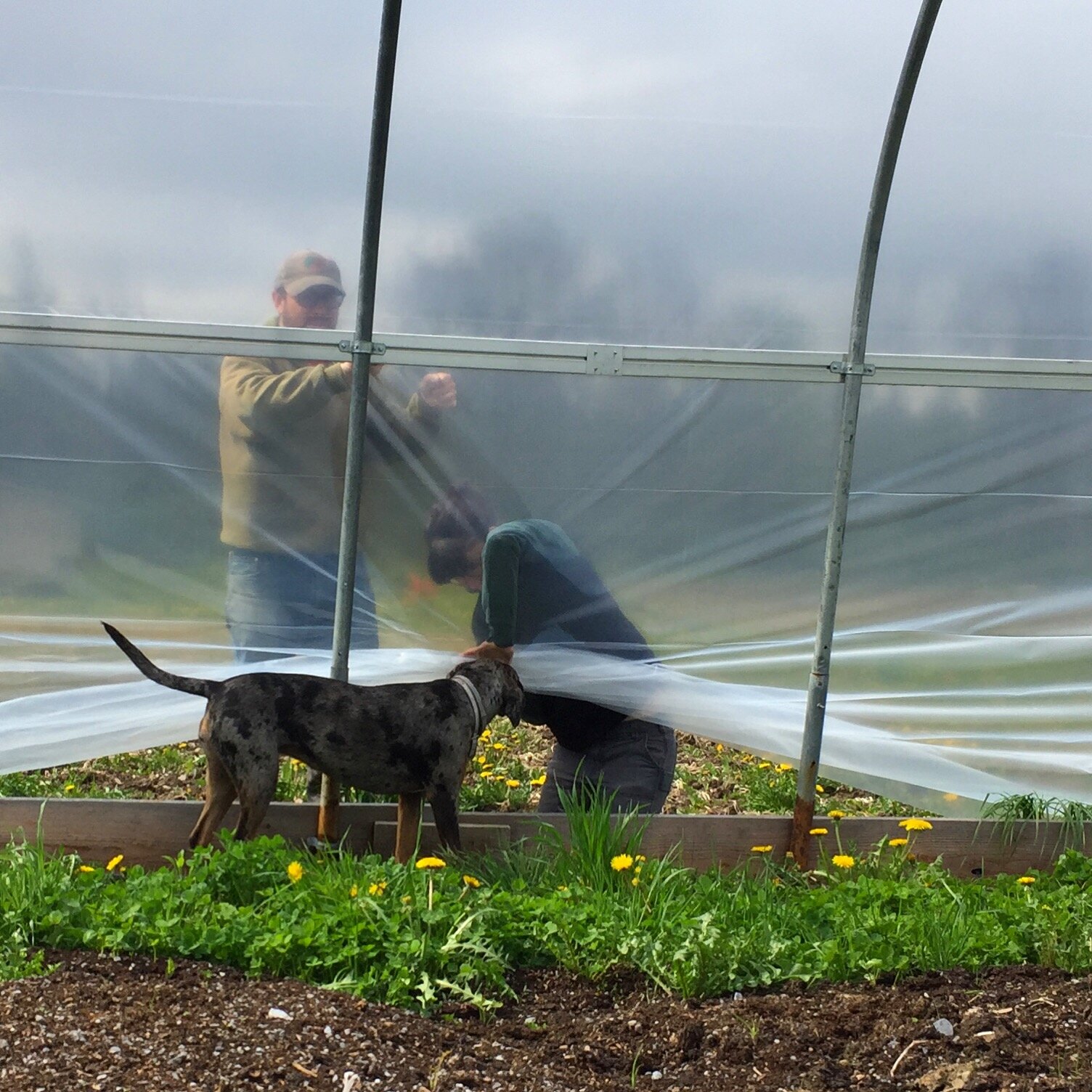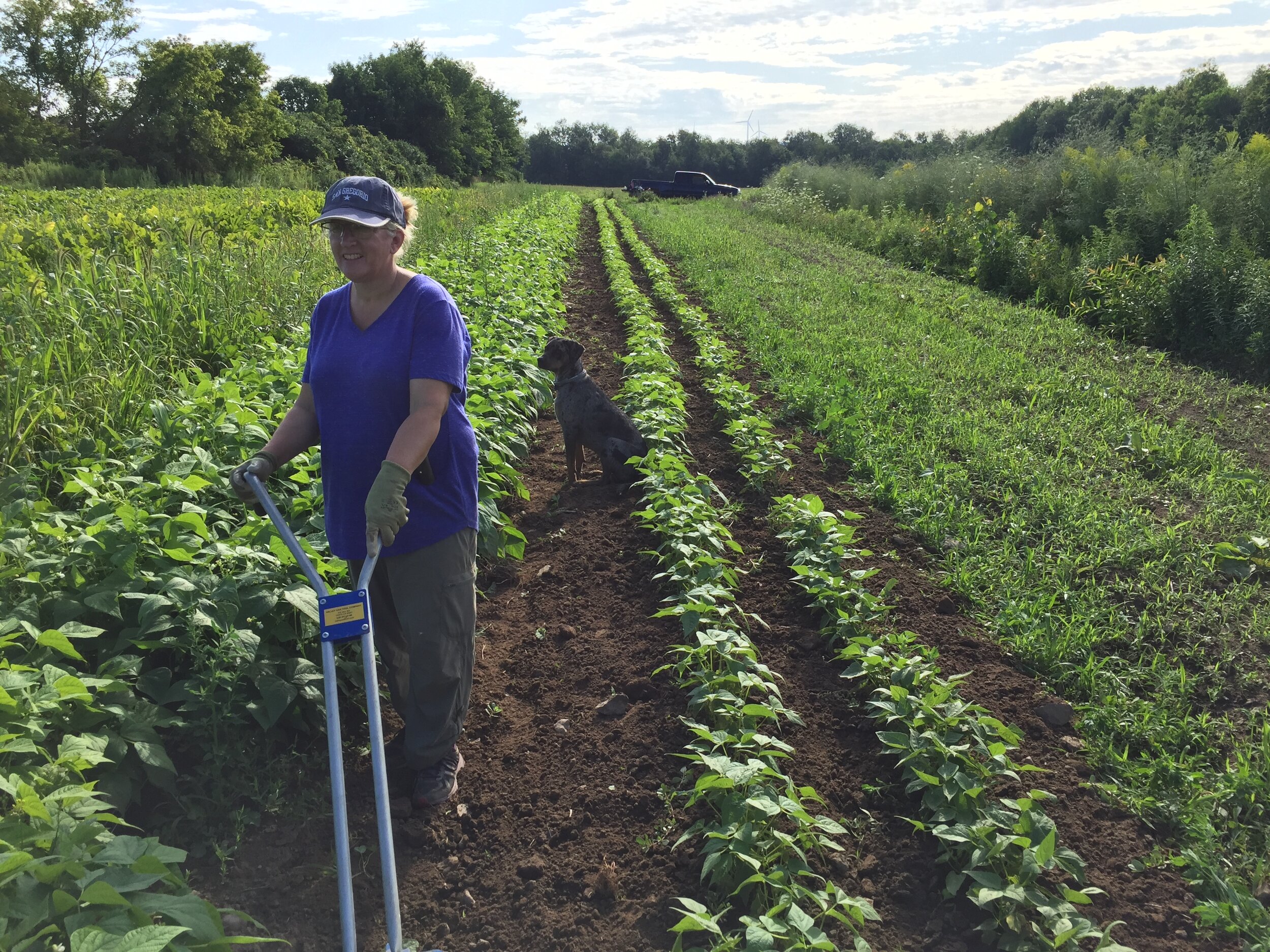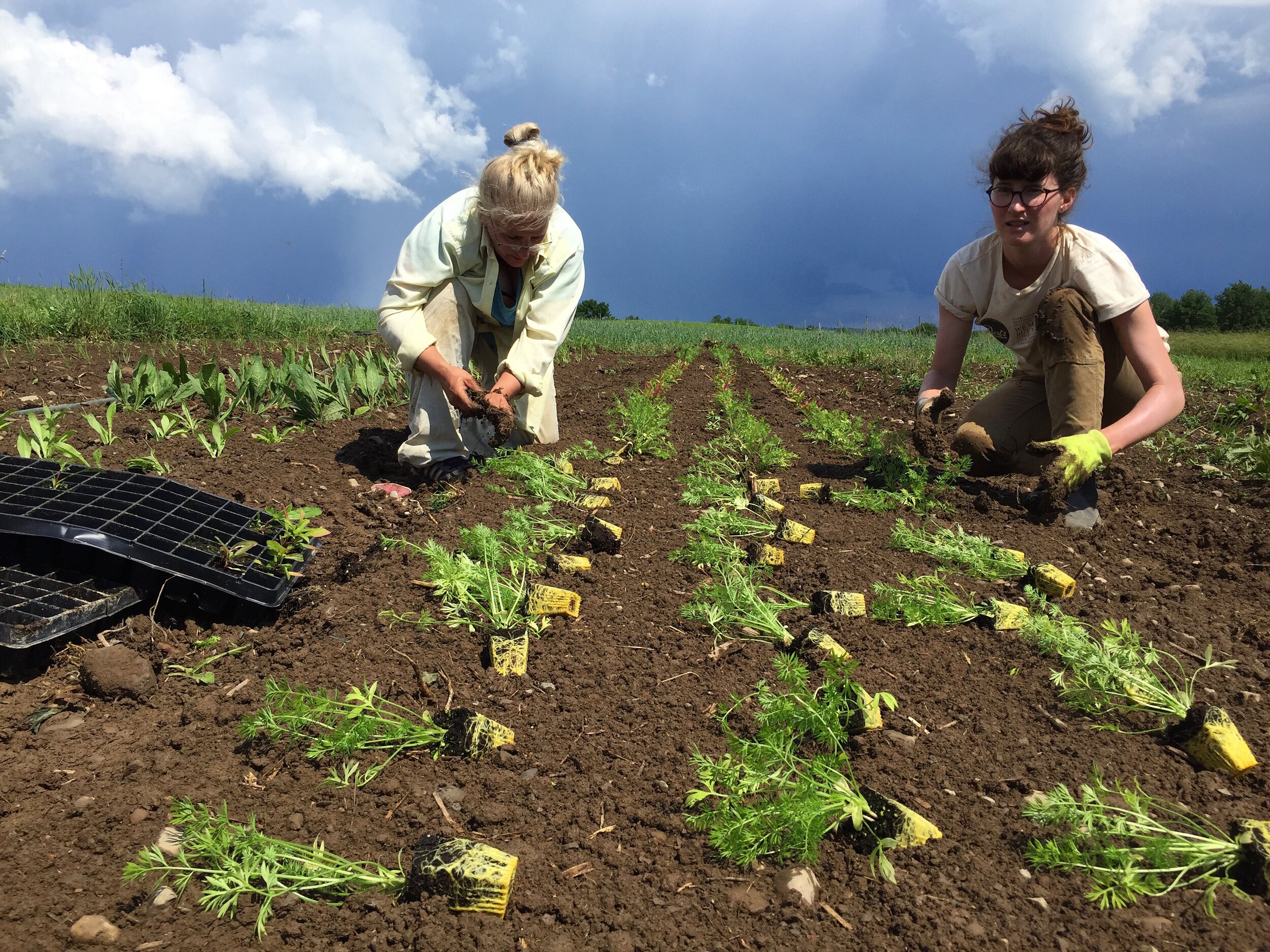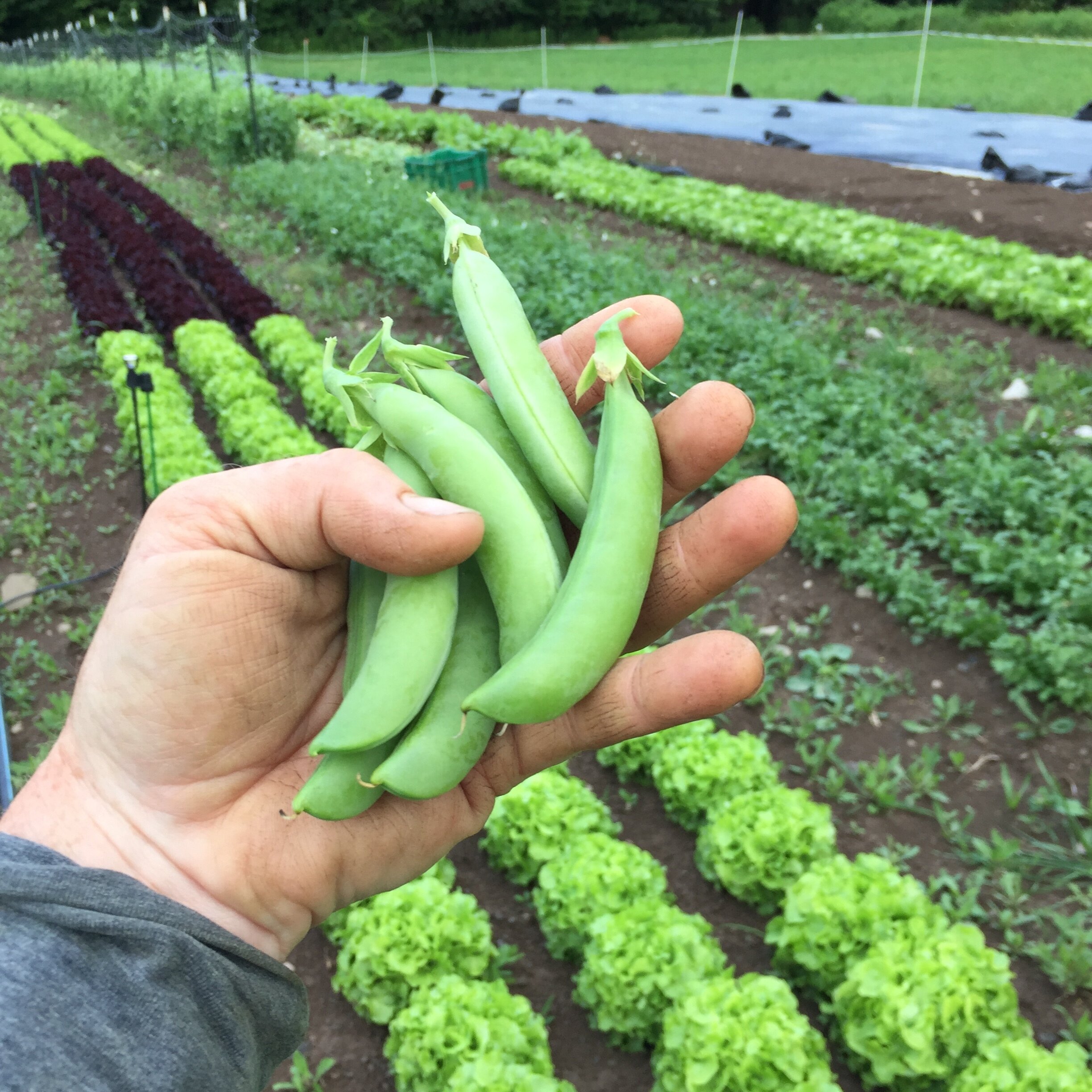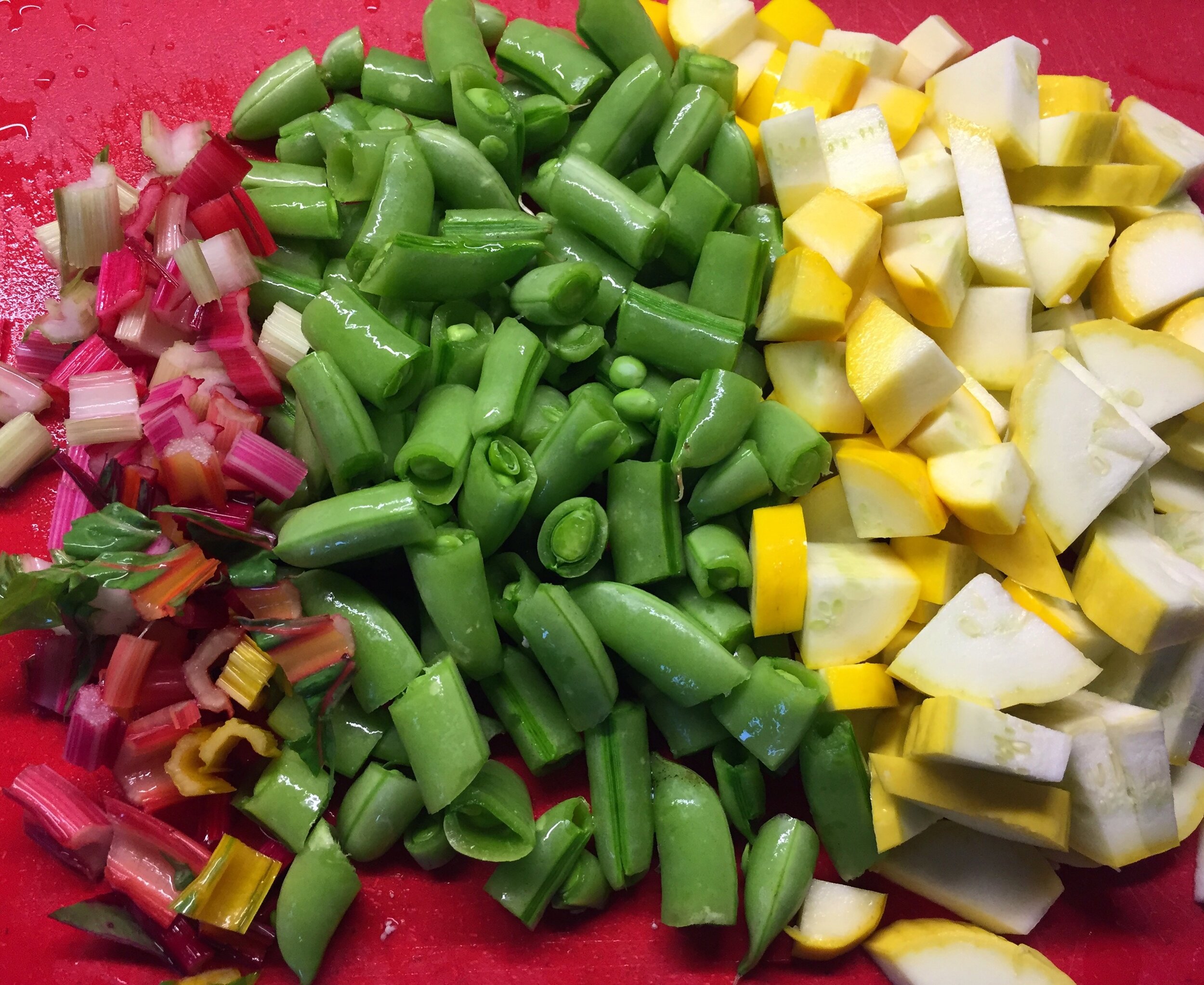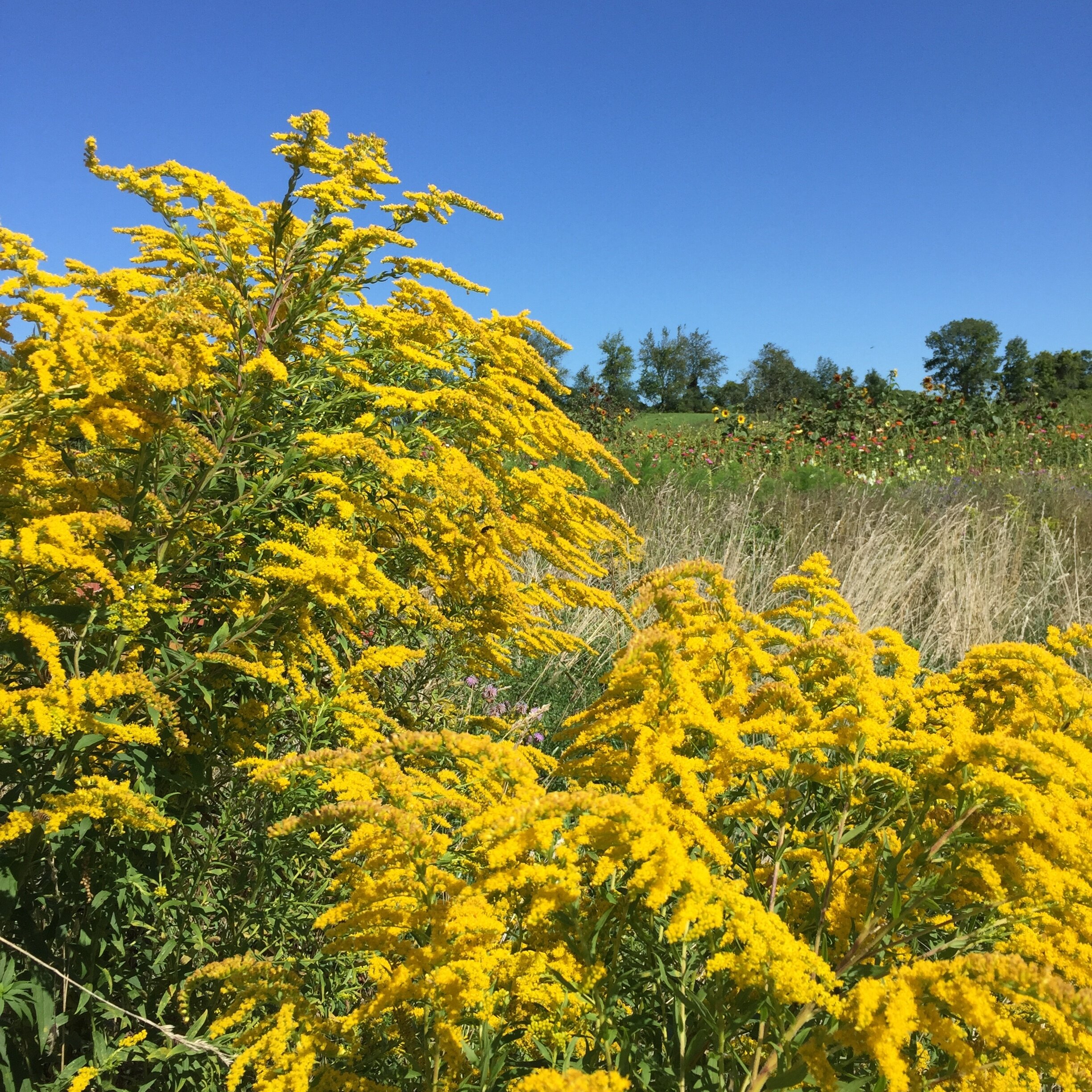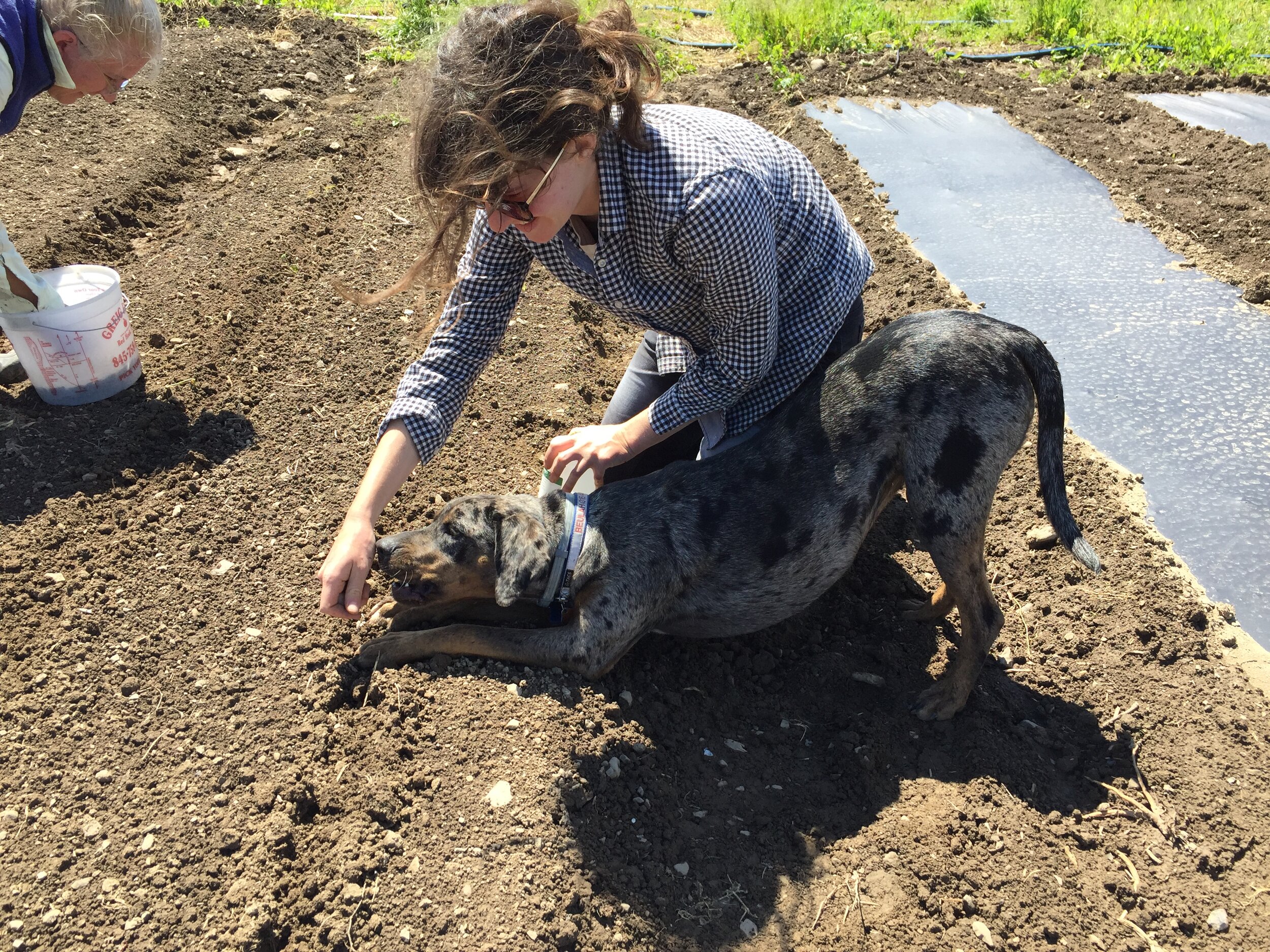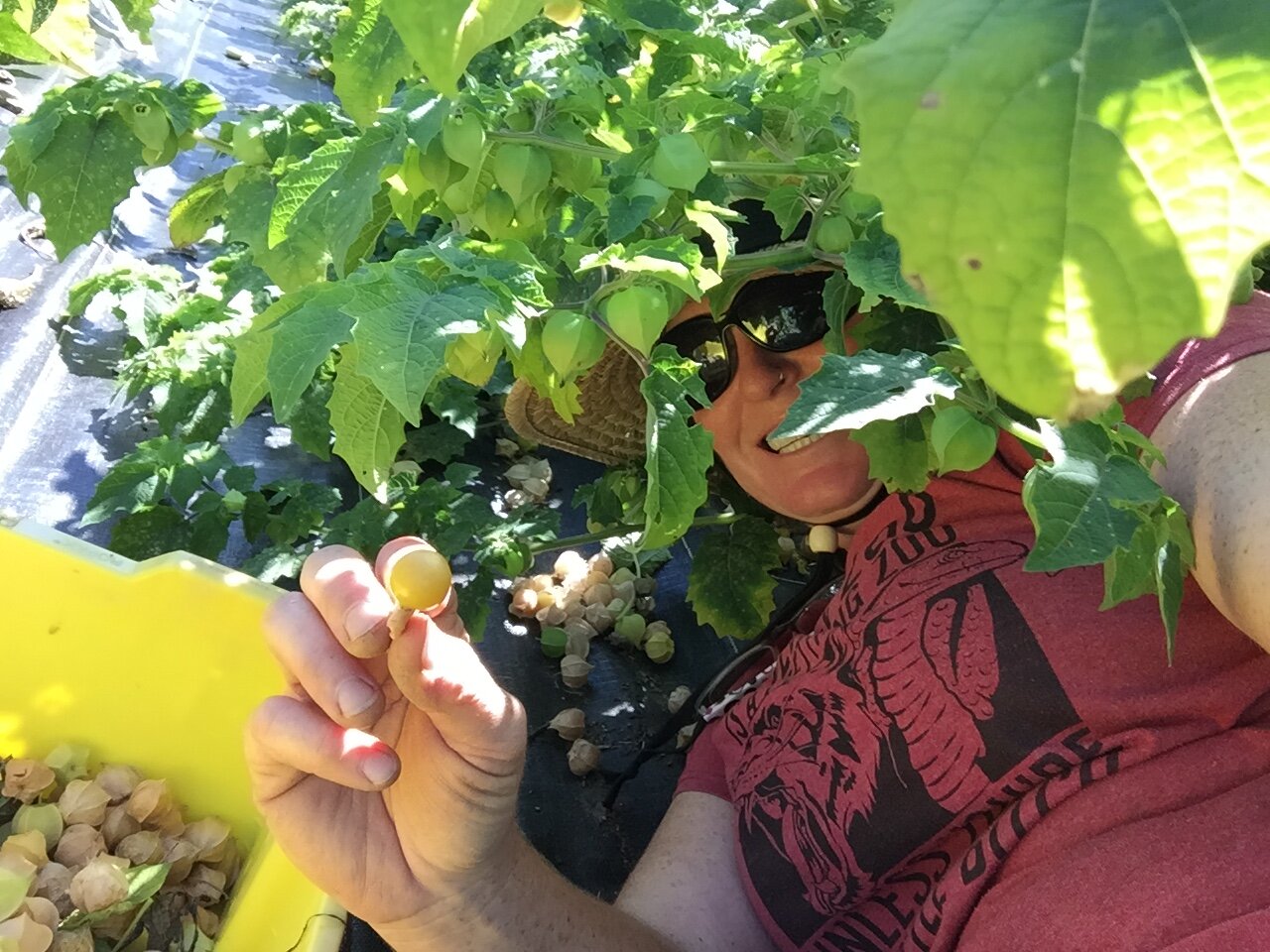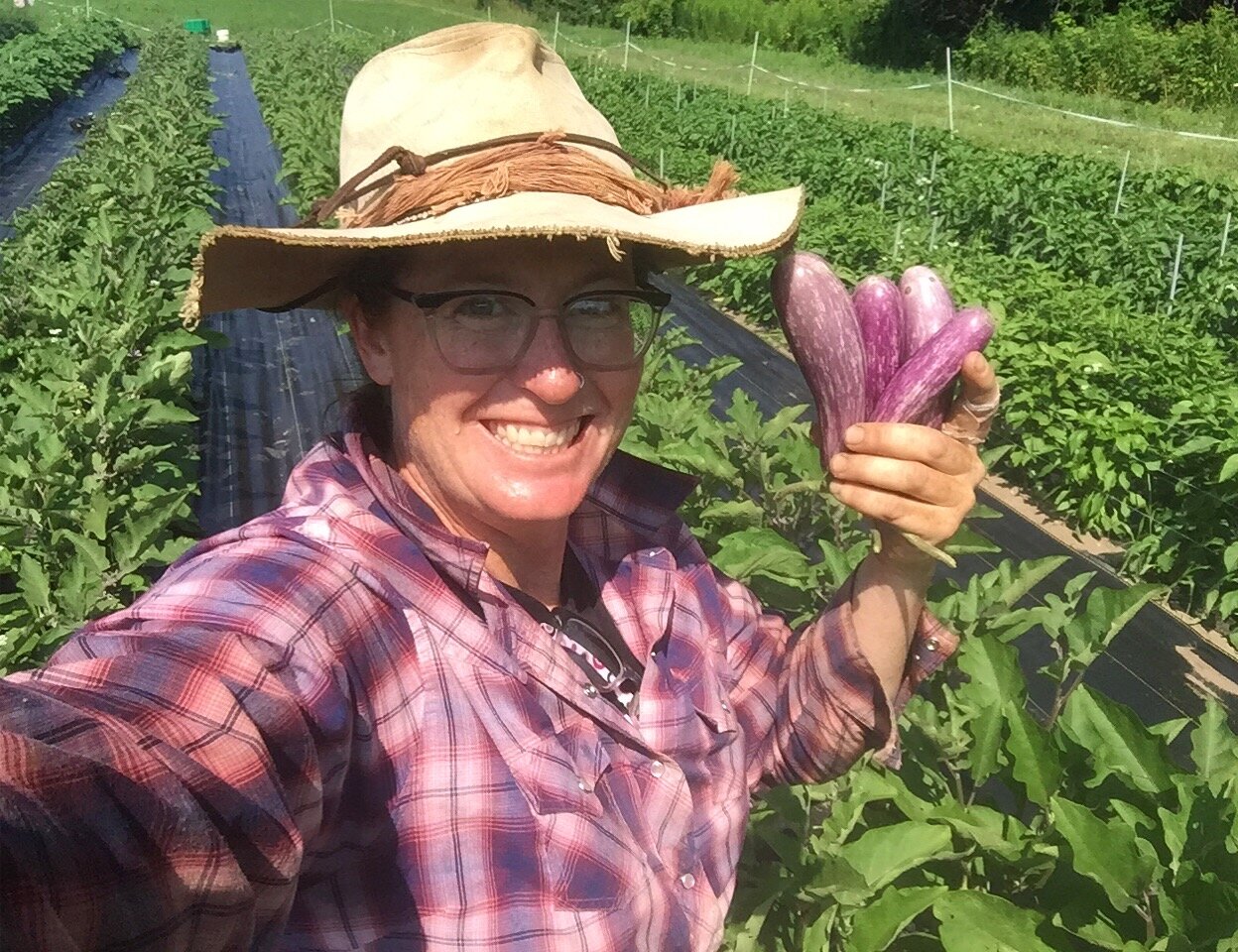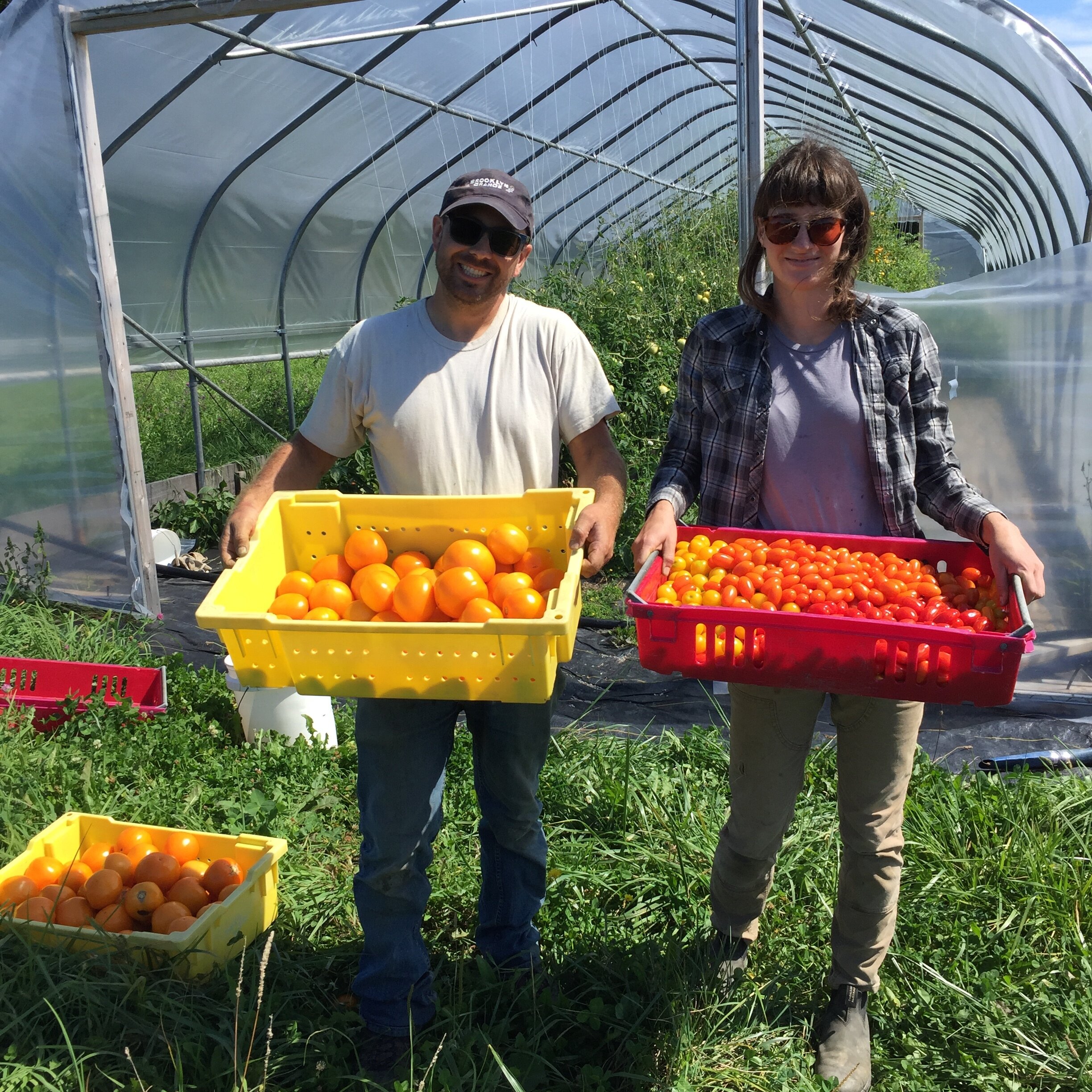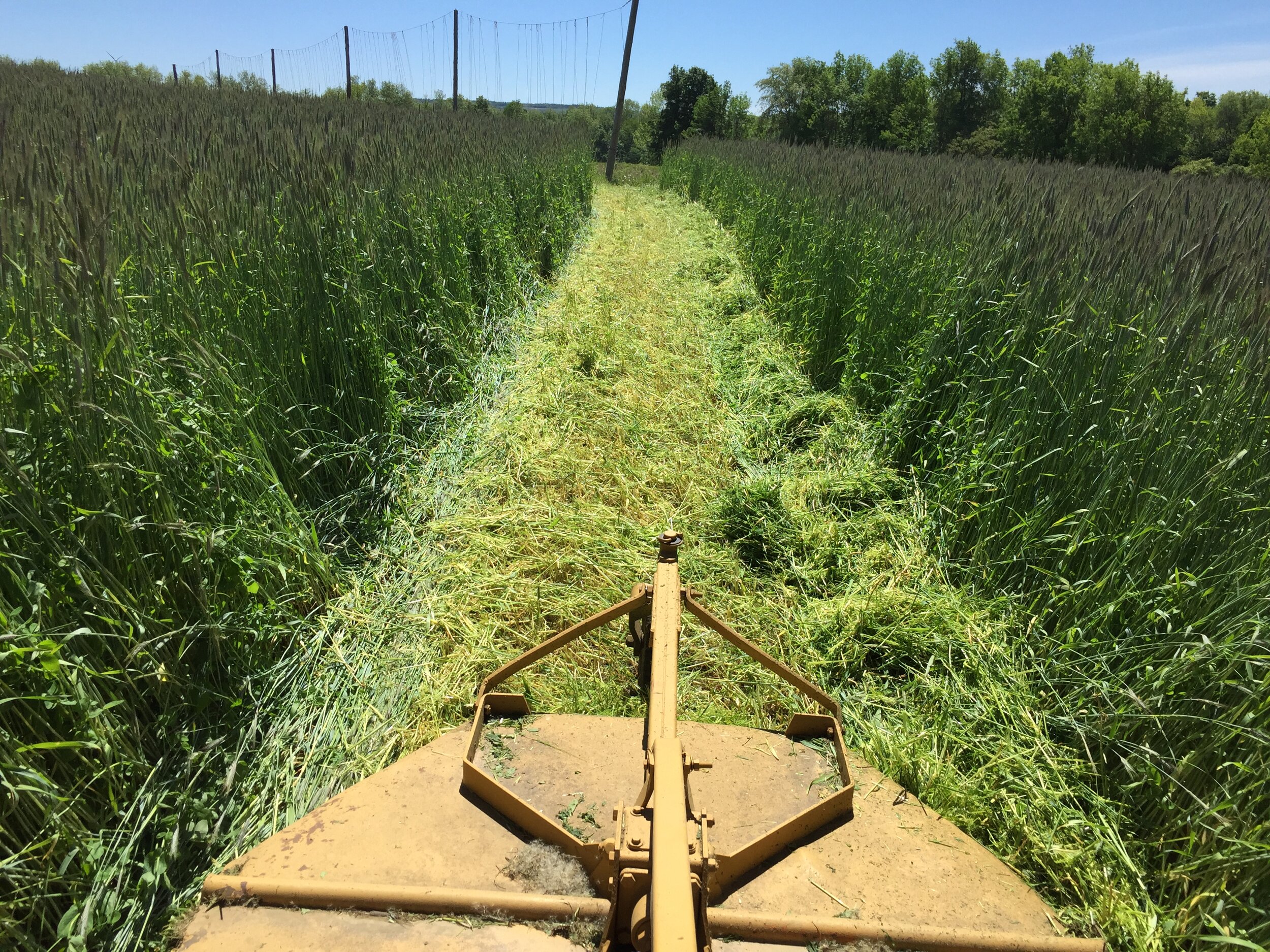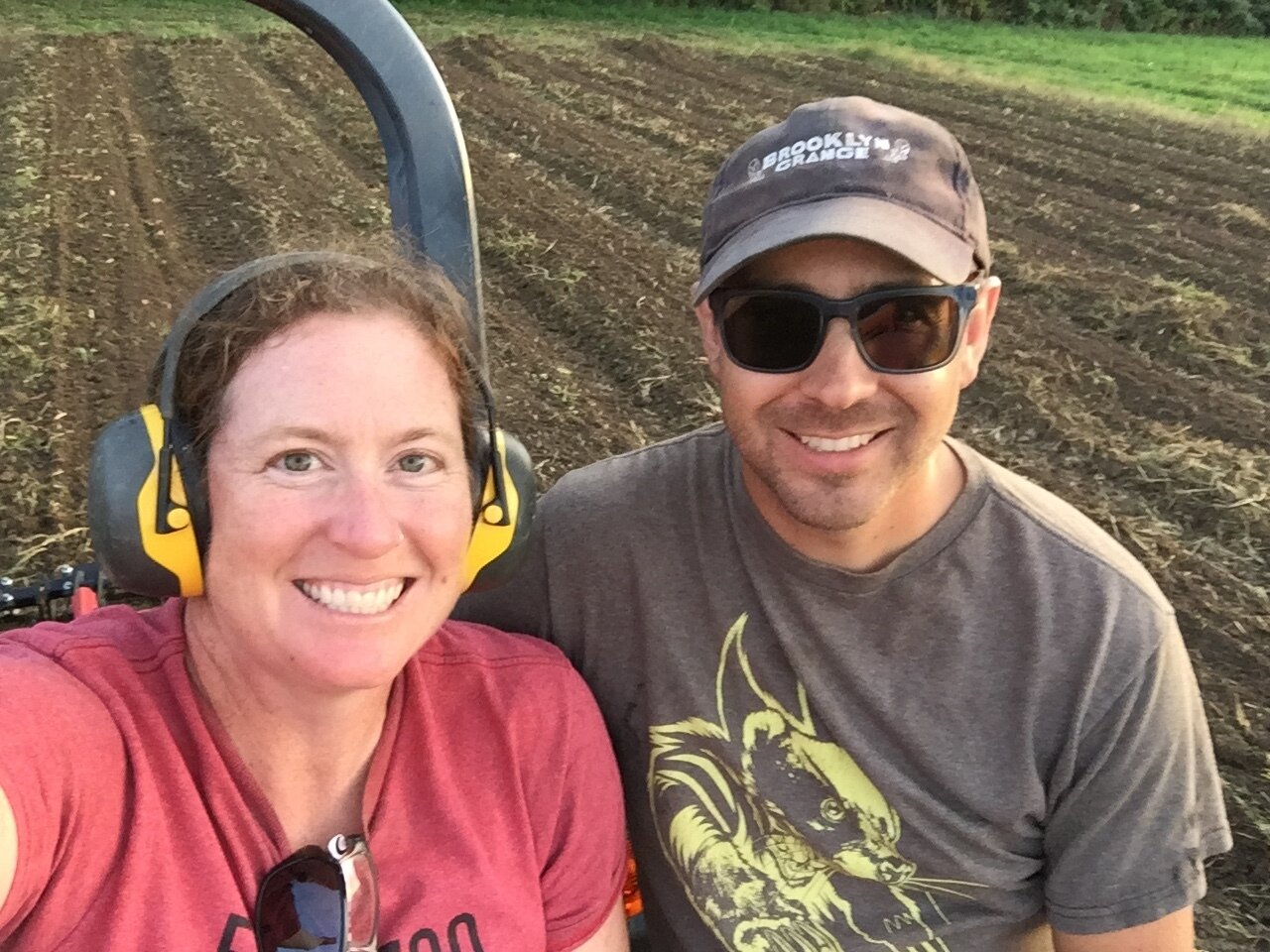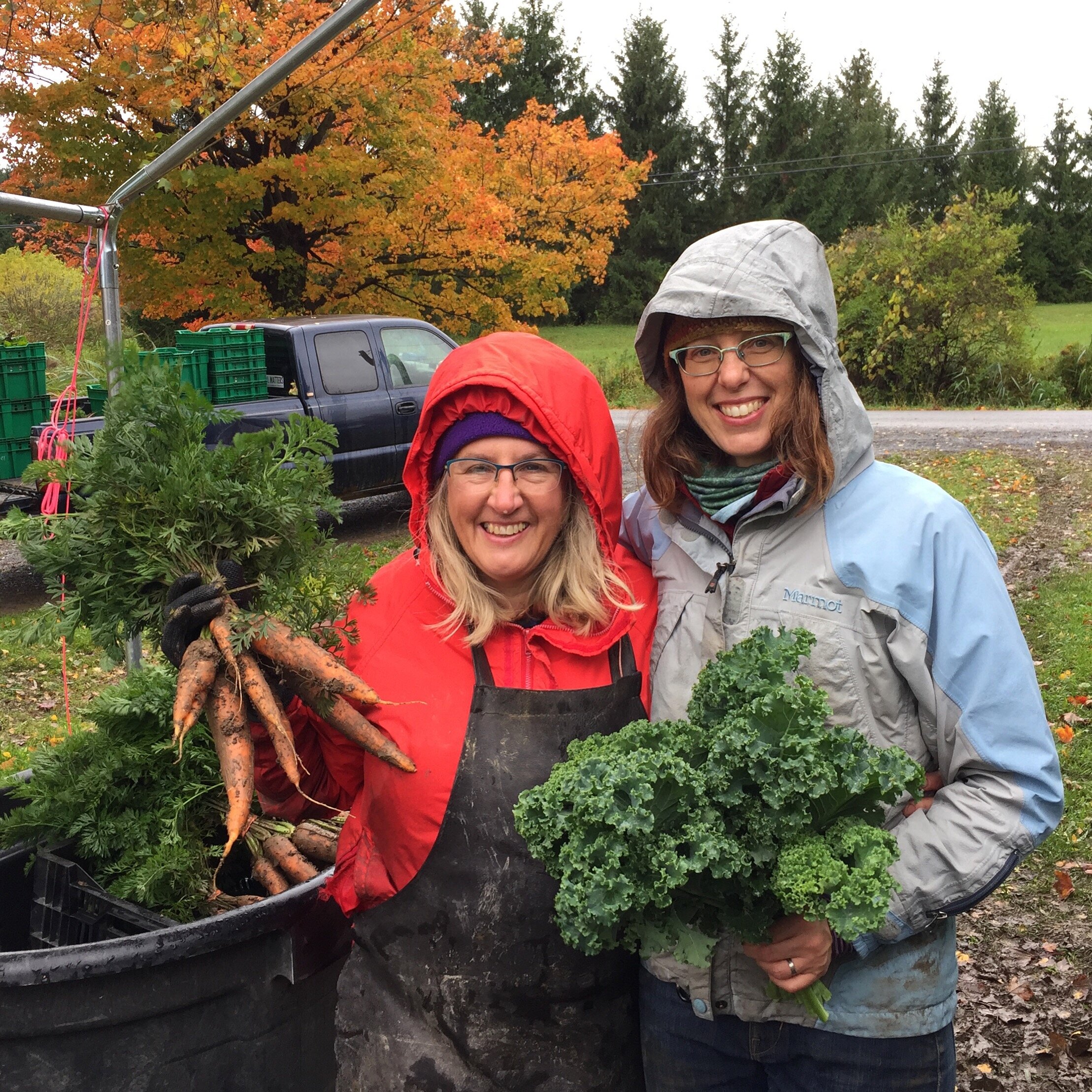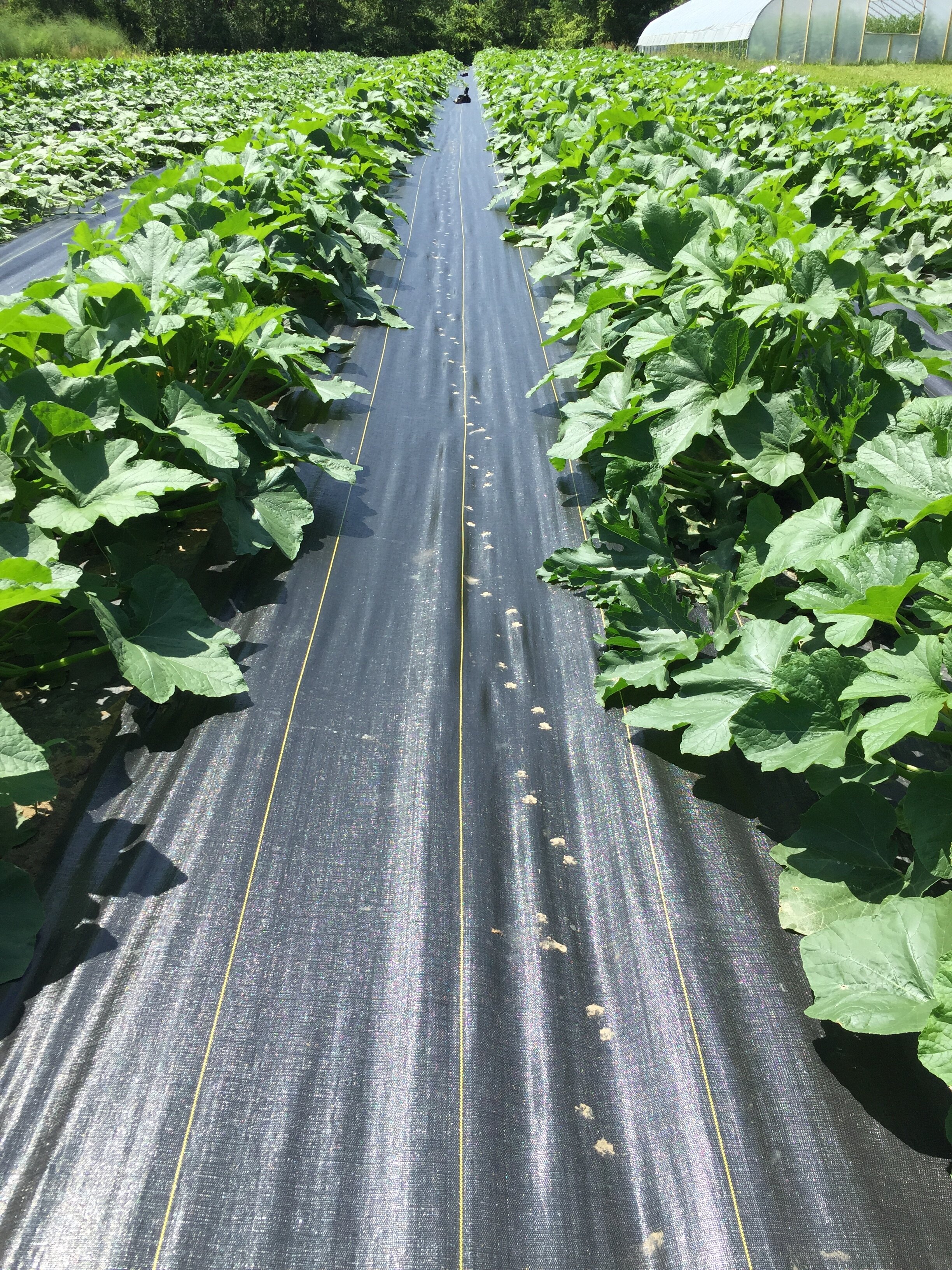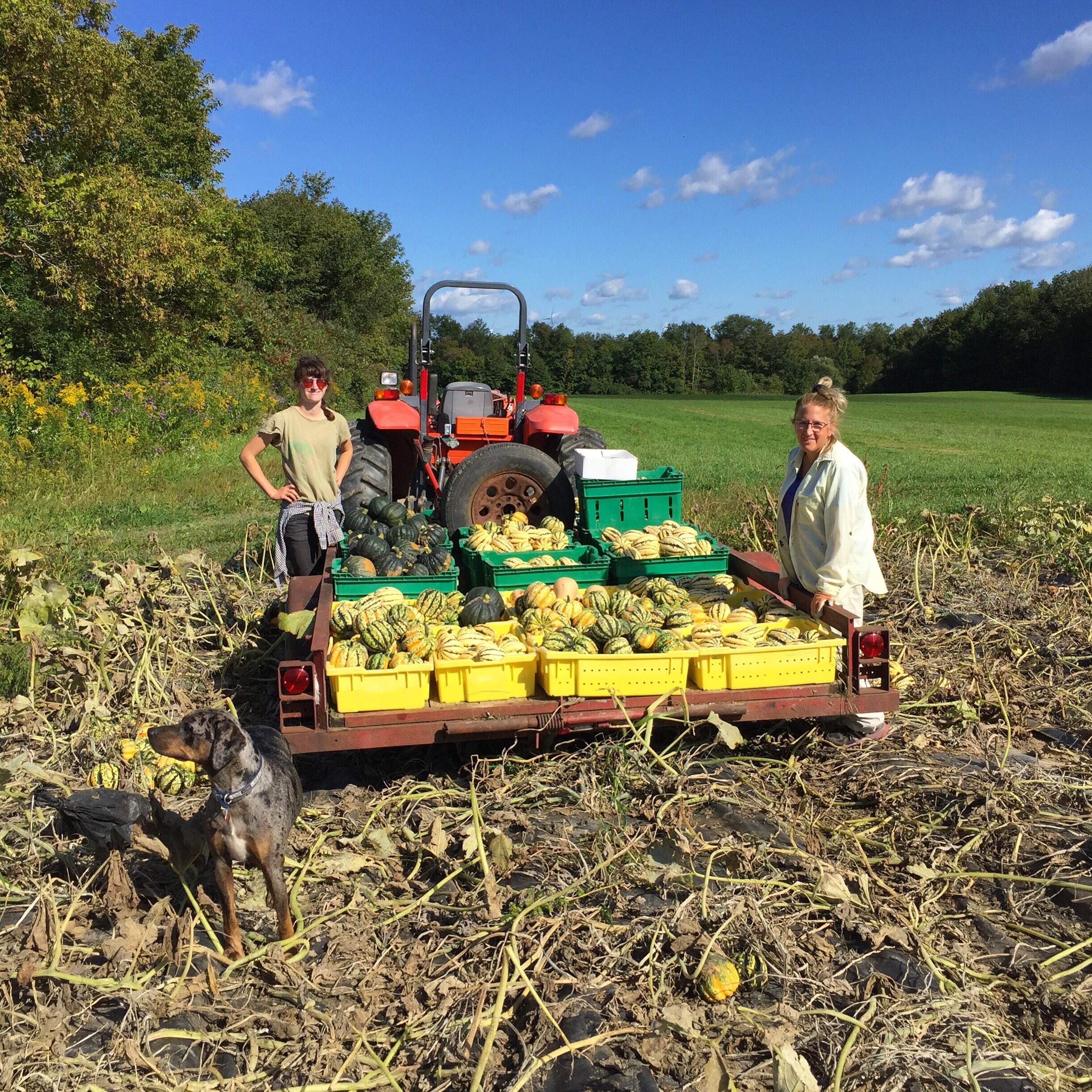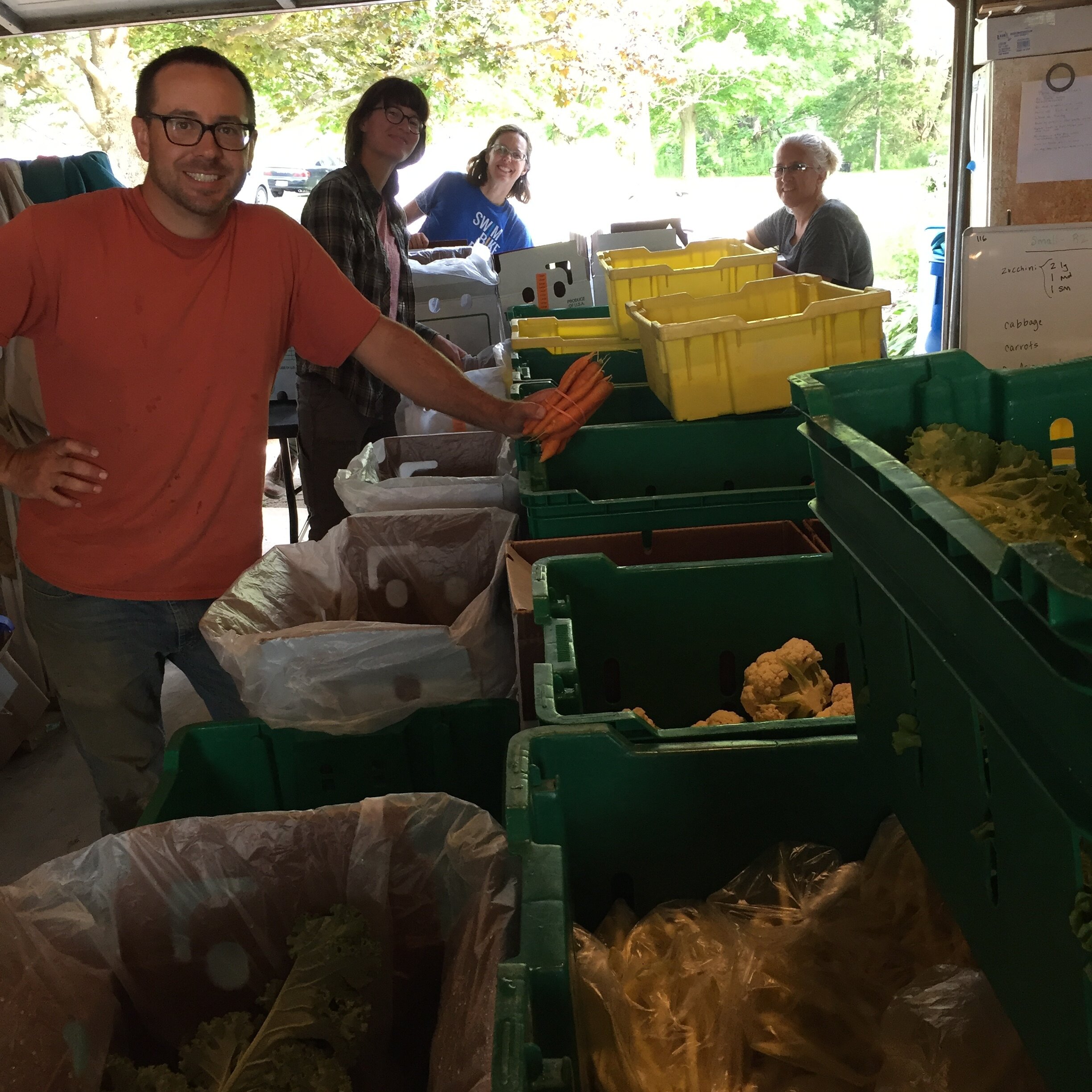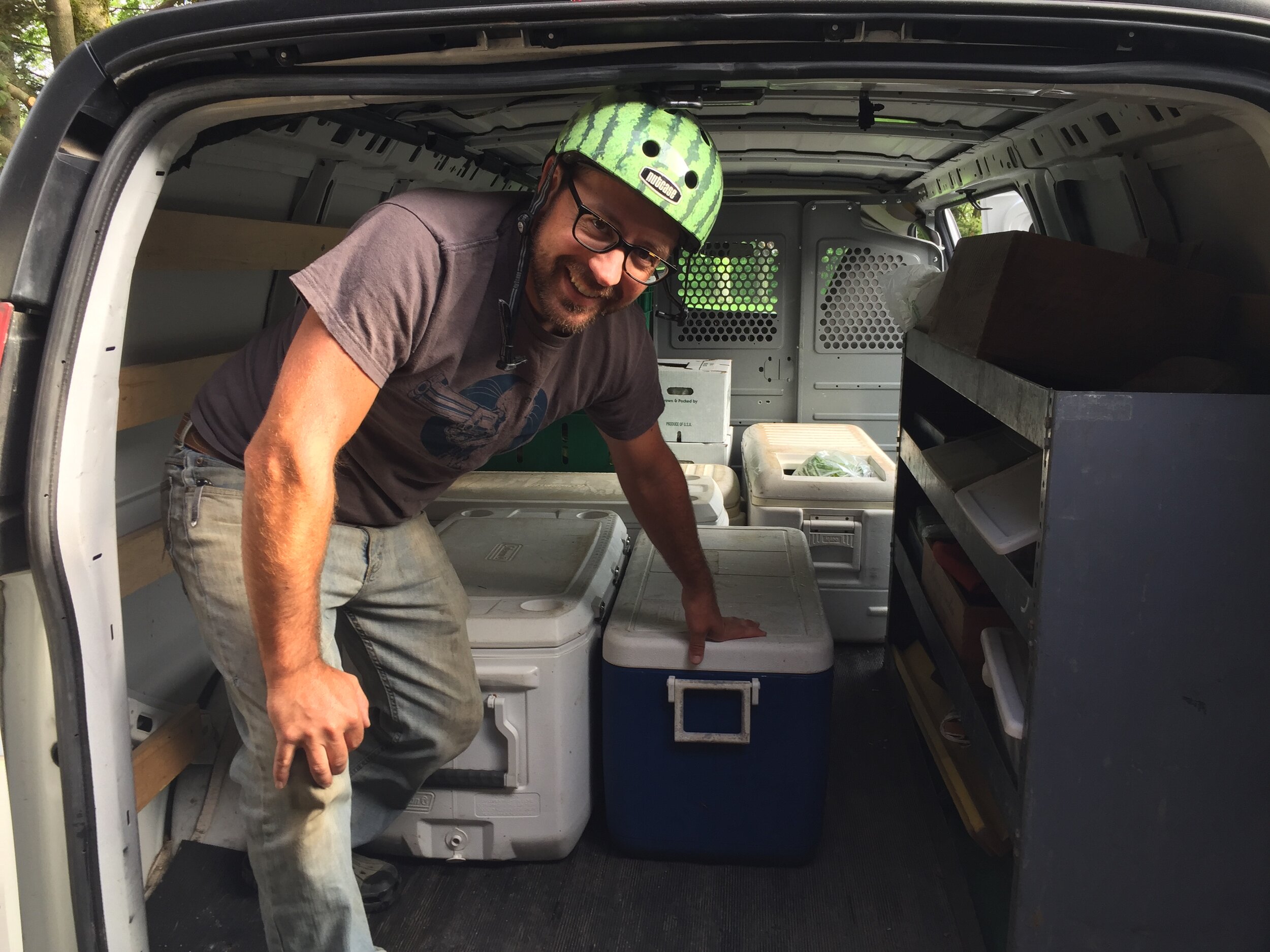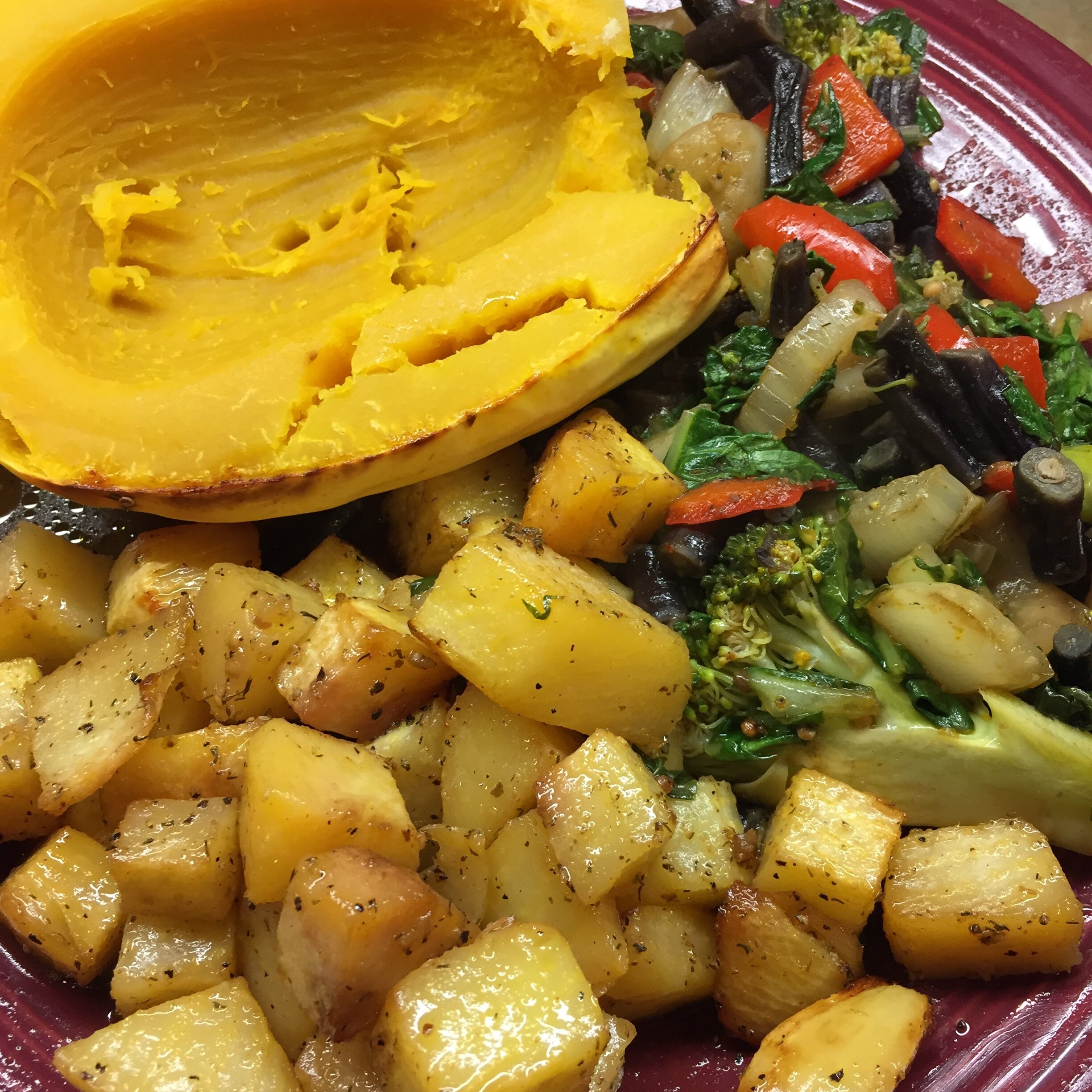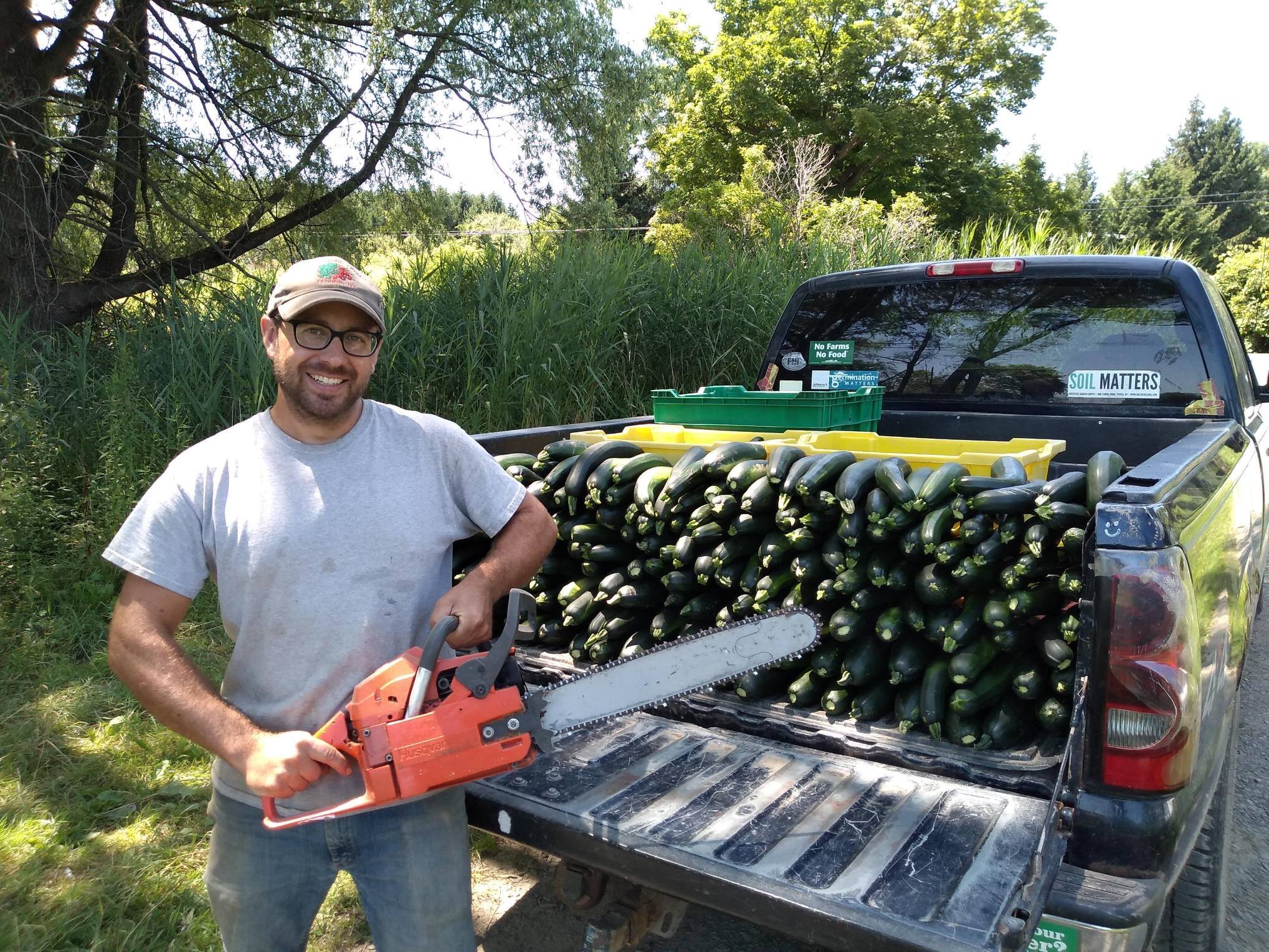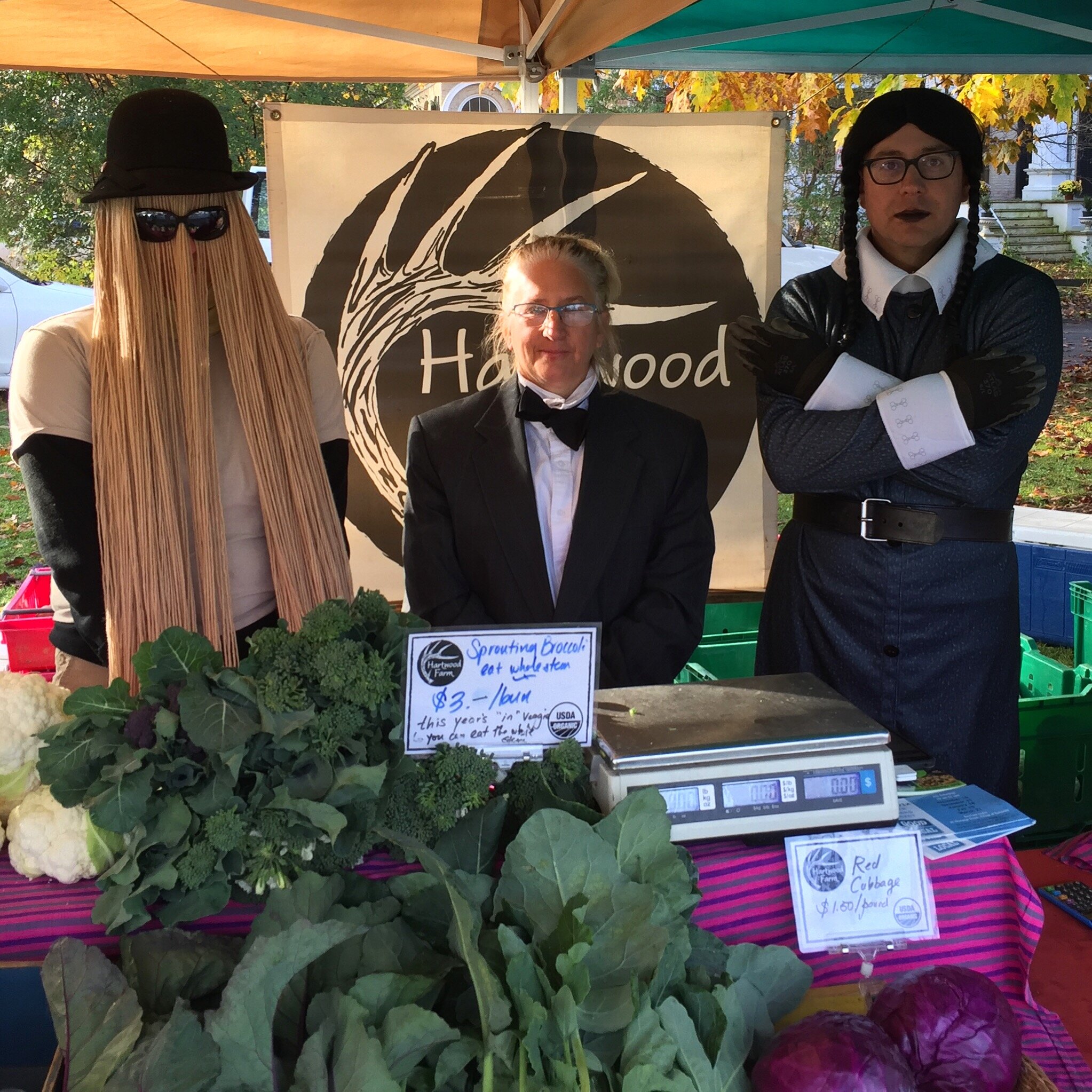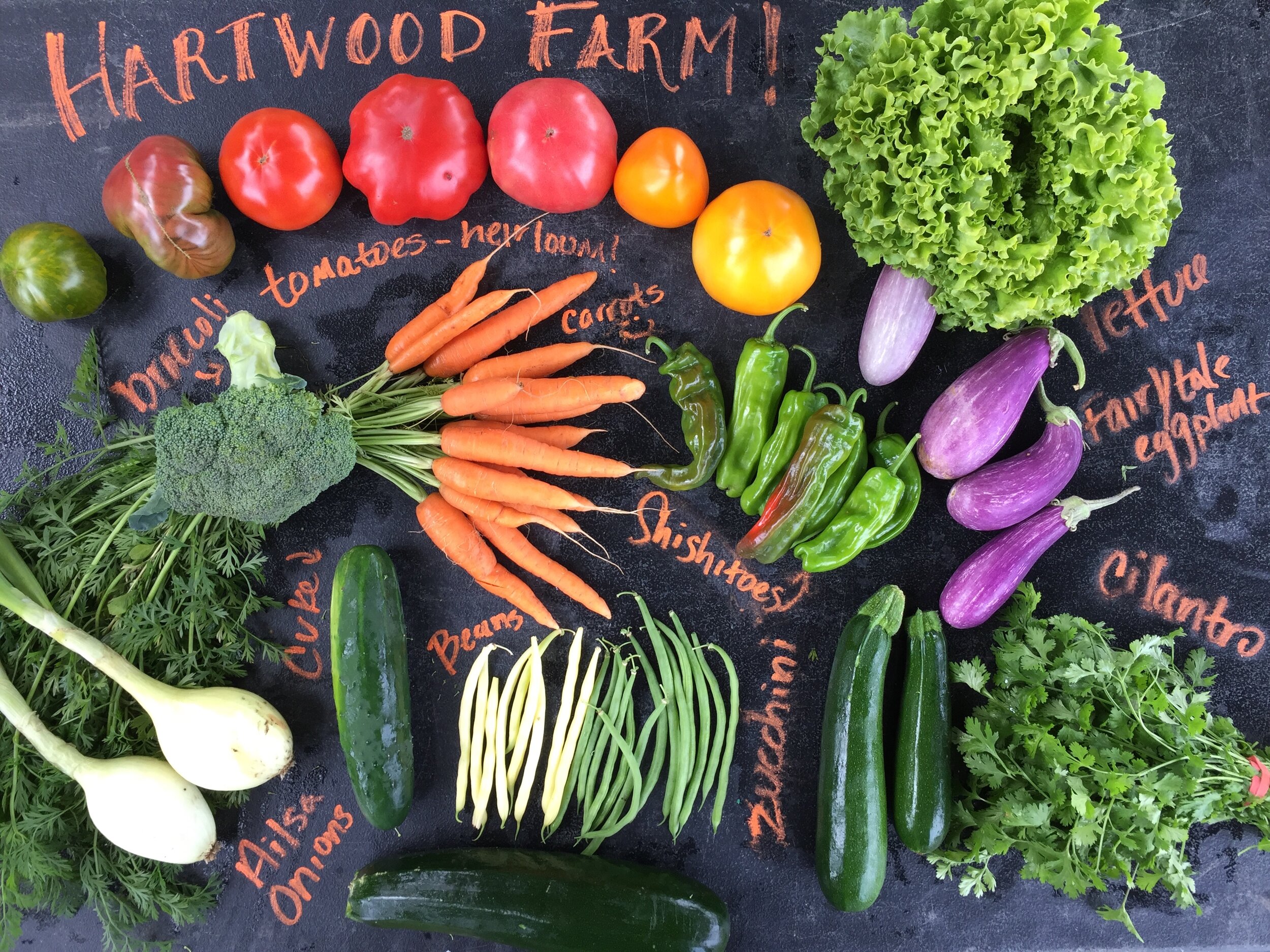Mr. Le Pew
On Friday, we had a near miss with one of our local Mr. Pepes. On Thursday, Matt finally won the battle with the groundhog that spent most of last summer grazing in one of our fields. I’ll spare you the details, but since one of Beulah’s main farm dog assignments is total control of groundhogs on the farm (one of them can eat thirty CSA shares worth of crops in a month), he spent a good chunk of time playing with her and the deceased groundhog, while feeding her treats.
Thursday’s lesson stuck, since when we were out trudging Friday through the melting snow in the field, Beulah lit up with excitement when she spotted a groundhog-sized creature trundling towards us from the hedgerow. At 200 yards, it clearly looked like a groundhog to me as well, so I was cheering her own as she took off towards it. Yet as the dog raced closer, the “groundhog” started to shuffle around, revealing a long tail and a flash of one small white spot on its head. Its back end facing the pup and tail all fanned out, the mostly black skunk was holding its ground.
I don’t know if Beulah’s instincts kicked in or if she finally caught the switch to overtones of fear in my shouting, but about 15 feet out, she slowed down, looked unsure, and then slowly backed away before trotting back to me. Thank goodness!
I actually love skunks. Along with possums, they are mostly good animals on the farm, snuffling around and eating bugs, though both animals will happily and opportunistically kill chickens given the chance. The only problem is that they don’t co-exist well with dogs. On my farm in NH, I had a tool shed on skids in the center of the field, under which lived Pepe. Pepe would amble around the garden, pal around with the cat next door (they would walk together around the field and go under the shed to hang out), watch me garden from a safe distance away, and in general was an extremely polite little skunk. In our five years together, he never sprayed me or the dog.
One cold spring night I was worried about the freeze overwhelming my wood stove and small propane heater and killing our greenhouse starts, so I slept down in the field to stoke the wood stove a couple times that night. It was gross and propane-smelling in the greenhouse, so around midnight, I moved my cot and sleeping bag outside. I was sleeping soundly until some point in the middle of the night when I suddenly woke up. I looked at the dark sky, blazing with the stars and rising moon, and then turned my head to look at the greenhouse. What I saw instead, of course, was Pepe, his front paws up on the cot, his nose less than an inch from mine, little nose sniffling. We froze, staring at each other for endless minutes, the moon lighting up his glossy little eyes, before he jumped down and ambled off.
